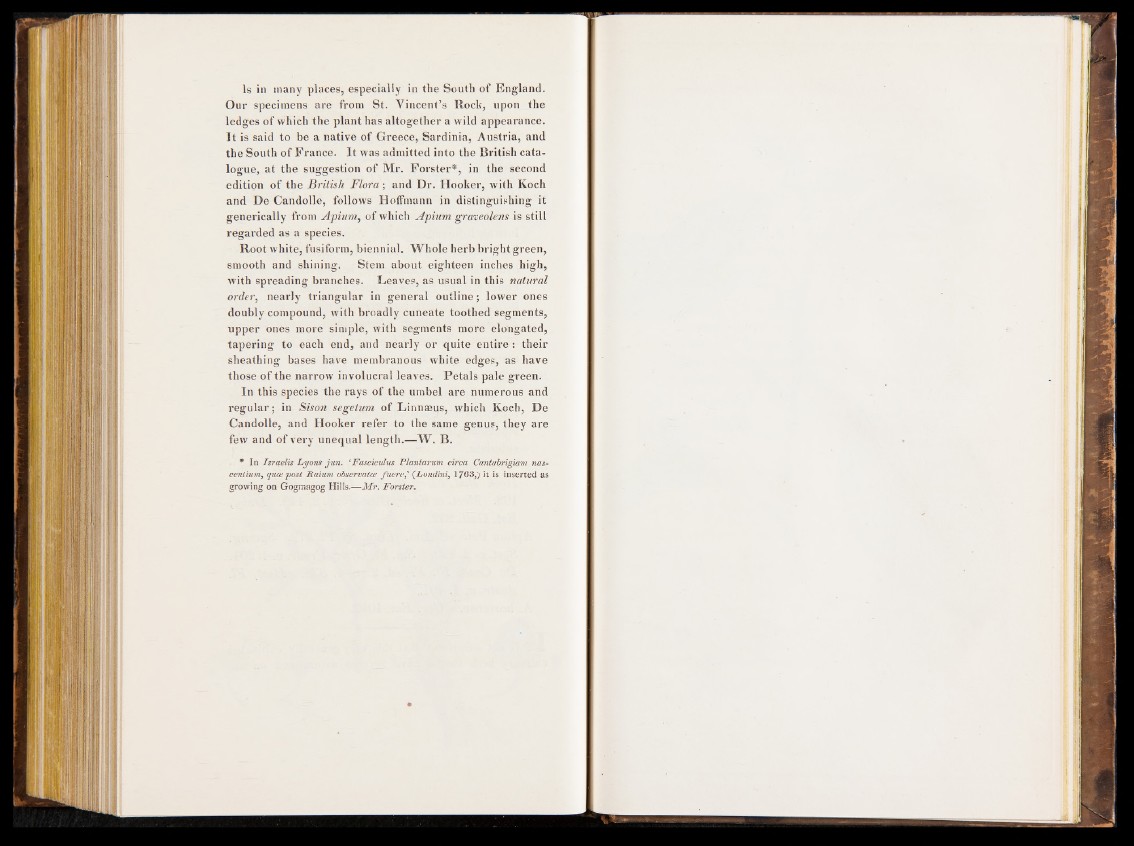
Is in many places, especially in the South of England.
Our specimens are from St. Vincent’s Rock, upon the
ledges of which the plant has altogether a wild appearance.
It is said to be a native of Greece, Sardinia, Austria, and
the South of France. It was admitted into the British catalogue,
at the suggestion of Mr. Forster*, in the second
edition of the British Flora ; and Dr. Hooker, with Koch
and De Candolle, follows Hoffmann in distinguishing it
generically from Apium, of which Apium graveolens is still
regarded as a species.
Root white, fusiform, biennial. Whole herb bright green,
smooth and shining. Stem about eighteen inches high,
with spreading branches. Leaves, as usual in this natural
order, nearly triangular in general outline; lower ones
doubly compound, with broadly cuneate toothed segments,
upper ones more simple, with segments more elongated,
tapering to each end, and nearly or quite entire : their
sheathing bases have membranous white edges, as have
those of the narrow involucral leaves. Petals pale green.
In this species the rays of the umbel are numerous and
regular; in Sison segetum of Linnaeus, which Koch, De
Candolle, and Hooker refer to the same genus, they are
few and of very unequal length.—W. B.
* In Israelis Lyons jun. ‘Fasciculus Plantarum circa Cantabrigian nas-
centium, quce post Raium observatce fuerej (Londini, 1763,) it is inserted as
growing on Gogmagog Hills.-—Mr. Forster.